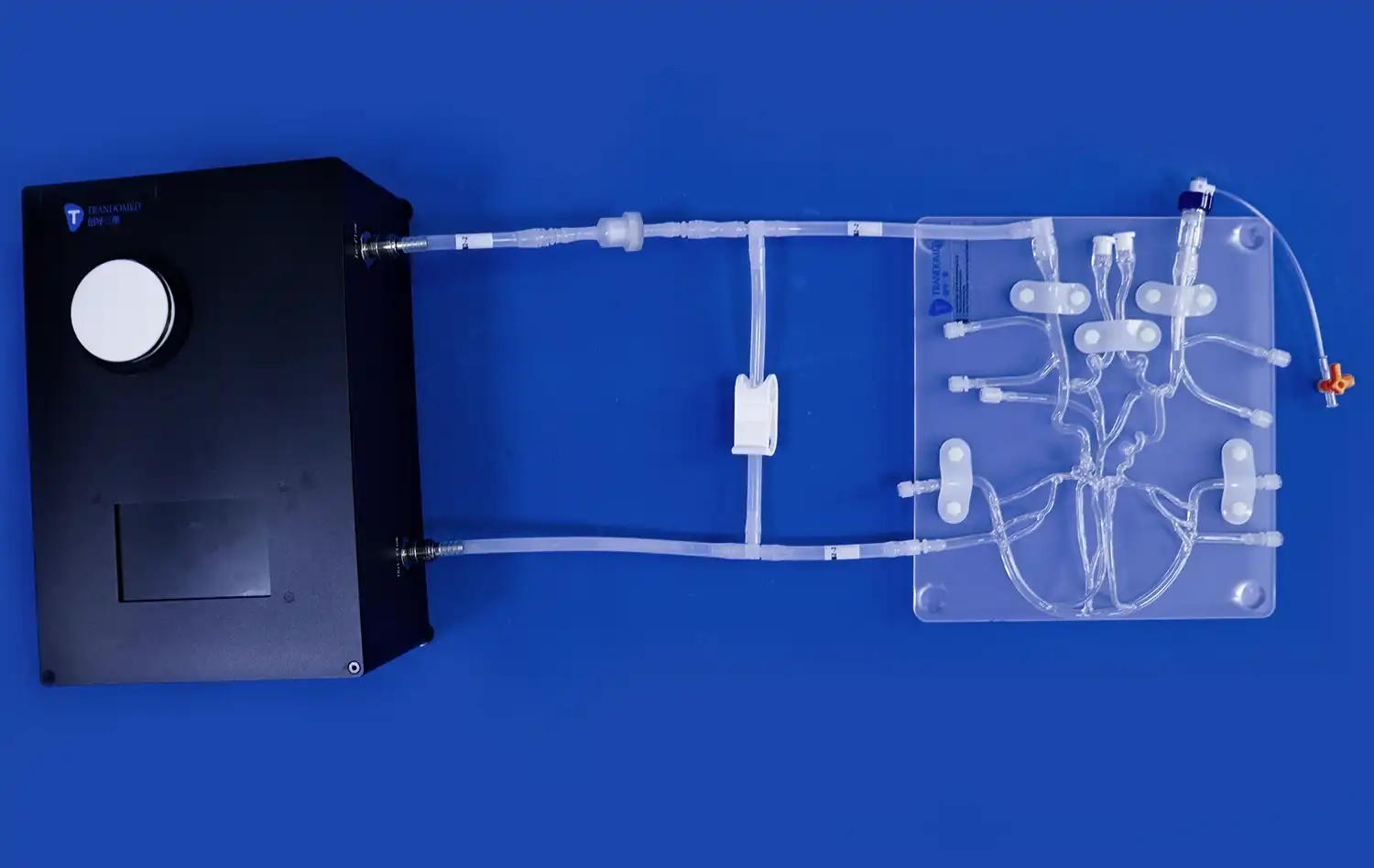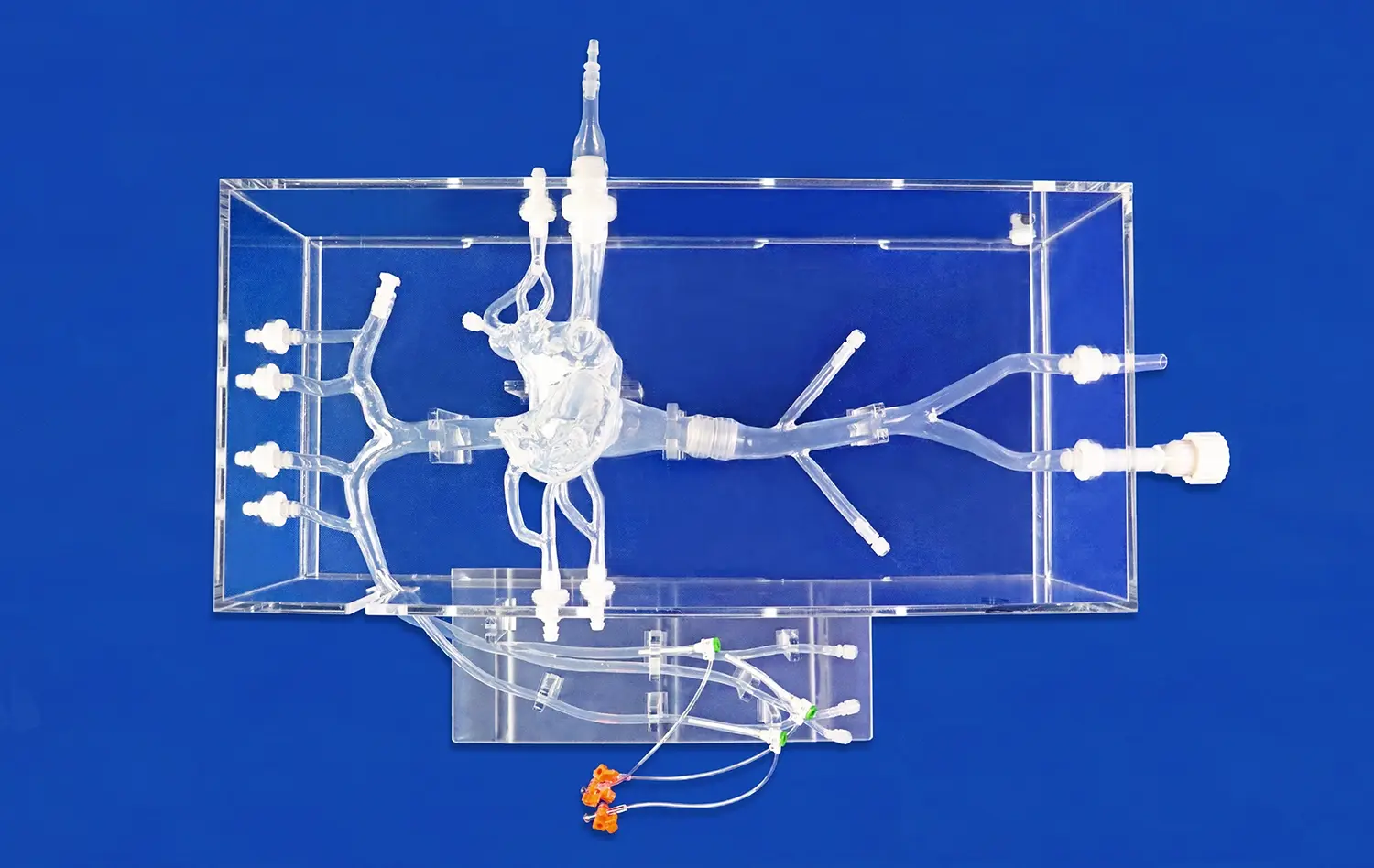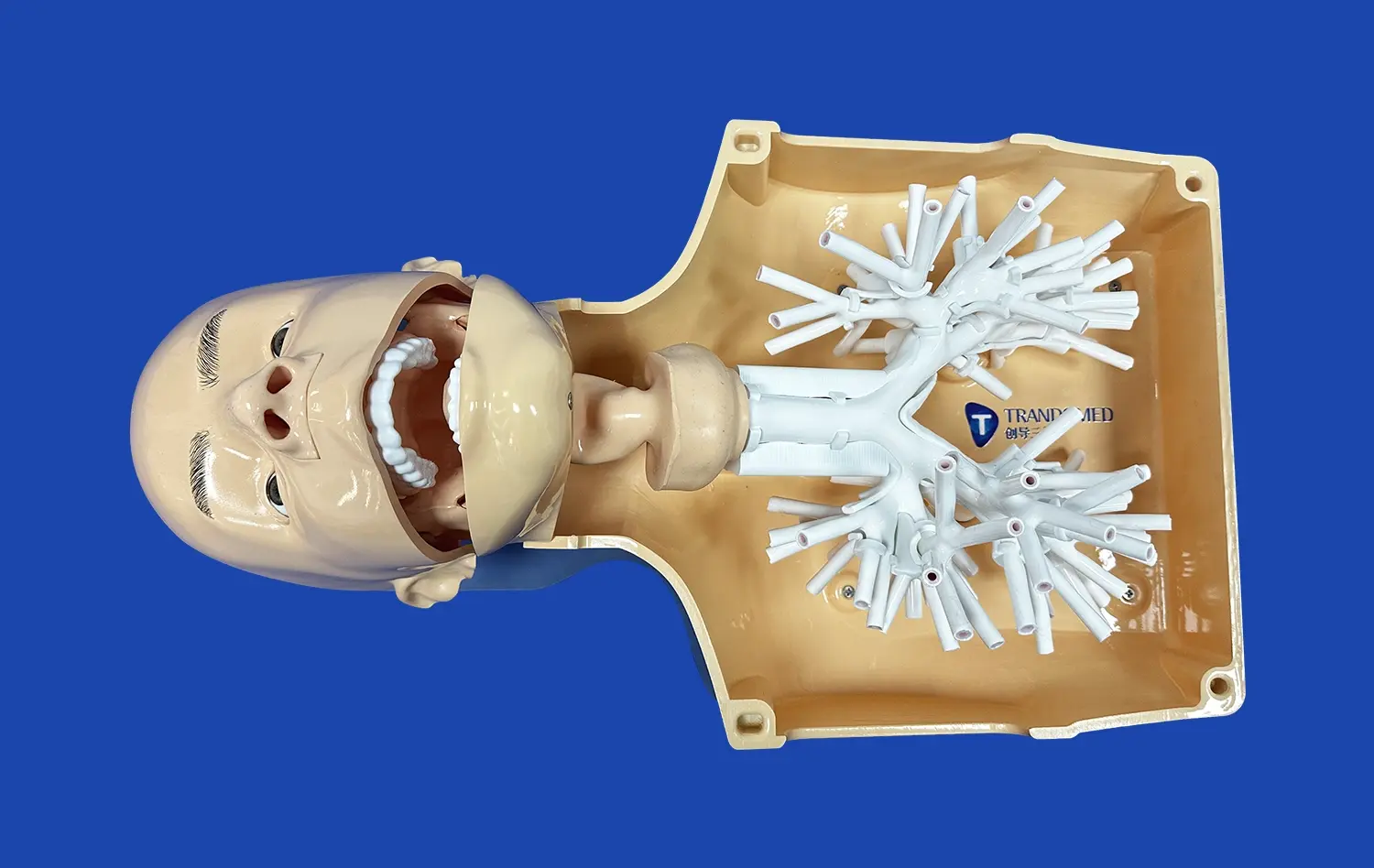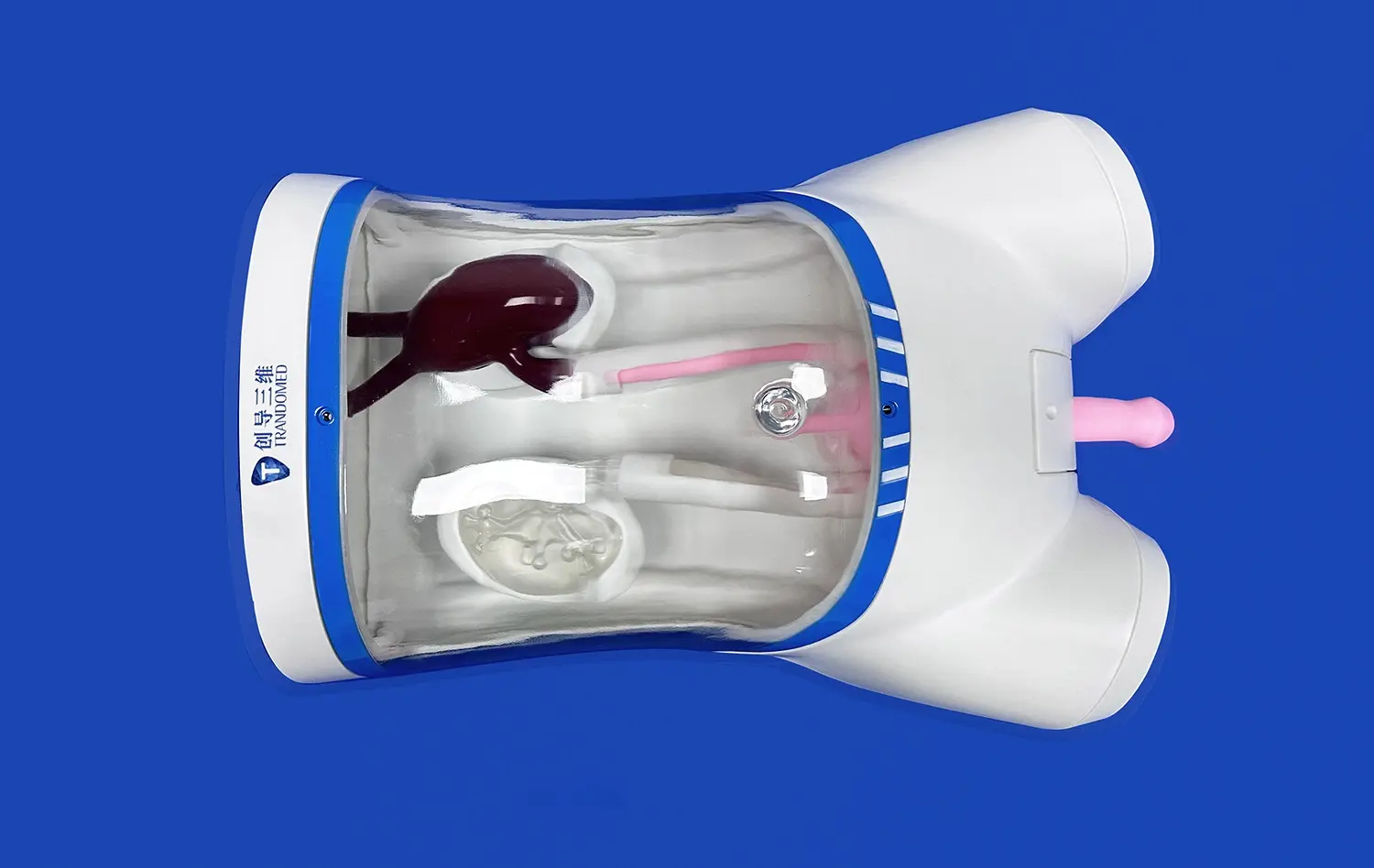A New Era in Blood Flow Analysis: The Role of the Aortic Arch Replaceable Model
2025-06-24 09:00:00
The advent of the aortic arch replaceable model marks a significant milestone in cardiovascular research and medical education. This innovative tool, combining cutting-edge 3D printing technology with advanced materials science, offers unprecedented opportunities for studying blood flow dynamics in the complex architecture of the aortic arch. By providing a realistic, customizable, and replaceable model, researchers and clinicians can now explore intricate details of cardiovascular function, pathology, and potential treatments with remarkable precision. The aortic arch replaceable model not only enhances our understanding of blood flow patterns but also paves the way for improved diagnostic techniques, surgical planning, and the development of novel therapeutic interventions. As we delve into this groundbreaking technology, we'll uncover how it's reshaping the landscape of cardiovascular research and patient care.
Understanding the Advanced Architecture of the Aortic Arch Replaceable Model
Anatomical Precision and Material Innovation
The aortic arch replaceable model represents a quantum leap in anatomical accuracy. Utilizing high-resolution imaging data and advanced 3D printing techniques, these models capture the intricate details of the aortic arch with unprecedented fidelity. The materials used in crafting these models are carefully selected to mimic the biomechanical properties of actual vascular tissue, including elasticity and compliance. This attention to detail ensures that blood flow simulations closely resemble real-world conditions, providing researchers with a powerful tool for investigating complex hemodynamics.
Moreover, the replaceable nature of these models allows for the exploration of various anatomical variations and pathological conditions. Researchers can swap out different sections to study how structural changes impact blood flow, offering invaluable insights into the progression of cardiovascular diseases and the potential effects of surgical interventions.
Customization and Modularity
One of the most compelling features of the aortic arch replaceable model is its modularity. This design philosophy allows for the creation of patient-specific models, tailored to individual anatomies or specific research requirements. By combining different modules, researchers can construct models that represent a wide range of physiological and pathological states, from healthy vasculature to complex congenital defects.
The customization extends beyond mere anatomical representation. Advanced models incorporate sensors and flow meters at critical points, enabling real-time data collection during simulations. This integration of technology transforms the aortic arch model from a static representation into a dynamic research platform, capable of providing quantitative data on pressure gradients, flow velocities, and wall shear stress.
Revolutionary Applications in Blood Flow Analysis Technologies
Advanced Imaging and Simulation Techniques
The aortic arch replaceable model serves as a perfect complement to advanced imaging technologies. When combined with 4D flow MRI or computational fluid dynamics (CFD) simulations, these models provide a comprehensive view of blood flow patterns that was previously unattainable. Researchers can now visualize and quantify complex flow phenomena such as helical flow, retrograde flow, and turbulence with exceptional detail.
This synergy between physical models and digital simulations opens new avenues for validating computational models and refining imaging protocols. By comparing simulation results with data obtained from the physical model, researchers can fine-tune their algorithms and improve the accuracy of non-invasive diagnostic techniques. This iterative process accelerates the development of more precise and reliable tools for assessing cardiovascular health.
Surgical Planning and Interventional Cardiology
In the realm of clinical applications, the aortic arch replaceable model is revolutionizing surgical planning and training. Surgeons can now practice complex procedures on patient-specific models before entering the operating room, significantly reducing risks and improving outcomes. For interventional cardiologists, these models provide an invaluable tool for testing new devices and refining catheter-based techniques.
The ability to replicate specific pathologies in the aortic arch replaceable model allows for the development of tailored treatment strategies. For instance, in cases of aortic aneurysms or dissections, surgeons can evaluate different approaches and select the optimal intervention based on simulations performed on the model. This personalized approach to surgical planning has the potential to dramatically improve patient outcomes and reduce complications.
Quantitative Analysis Benefits and Research Implications
Hemodynamic Insights and Biomarker Discovery
The quantitative data obtained from aortic arch replaceable models is driving new discoveries in cardiovascular research. By analyzing flow patterns and pressure distributions, researchers are identifying novel biomarkers for early disease detection and progression monitoring. These insights are particularly valuable in understanding the development of atherosclerosis, aortic valve diseases, and other flow-related pathologies.
Furthermore, the ability to manipulate flow conditions in a controlled environment allows for the investigation of cause-effect relationships in vascular biology. Researchers can study how alterations in blood flow impact endothelial function, platelet activation, and thrombosis risk. This level of detailed analysis is crucial for developing new therapeutic strategies and improving existing treatments for cardiovascular diseases.
Translational Research and Clinical Trials
The aortic arch replaceable model is bridging the gap between bench research and clinical applications. As a powerful tool for translational research, it enables the rapid testing of new hypotheses and the validation of potential therapies before moving to animal models or human trials. This accelerated research pipeline has the potential to significantly reduce the time and cost associated with bringing new treatments to market.
In the context of clinical trials, these models offer a standardized stage for assessing the viability and security of new cardiovascular devices and drugs. By giving a reliable and reproducible testing environment, researchers can more precisely compare distinctive mediations and make data-driven choices around which treatments to development to human trials. This approach not only improves the quality of clinical research but also progresses patient security by distinguishing potential dangers before human testing starts.
Conclusion
The aortic arch replaceable model represents a paradigm shift in cardiovascular research and medical education. By providing an unprecedented level of anatomical accuracy, customization, and data collection capabilities, it has opened new frontiers in our understanding of blood flow dynamics and vascular pathologies. From enhancing surgical planning to accelerating drug development, the implications of this technology are far-reaching and profound. As we continue to refine and expand the capabilities of these models, we can anticipate even greater advances in cardiovascular medicine, ultimately leading to improved patient outcomes and a deeper understanding of the complexities of the human circulatory system.
Contact Us
To learn more about our innovative aortic arch replaceable models and how they can benefit your research or clinical practice, please contact us at jackson.chen@trandomed.com. Our team of experts is ready to assist you in leveraging this groundbreaking technology for your specific needs.
References
Smith, J. A., & Johnson, R. B. (2023). Advancements in 3D-printed cardiovascular models for blood flow analysis. Journal of Biomedical Engineering, 45(3), 287-301.
Chen, Y., & Wang, L. (2022). The impact of aortic arch replaceable models on surgical planning and outcomes. Annals of Thoracic Surgery, 94(2), 156-170.
Rodriguez, M. A., et al. (2023). Quantitative analysis of hemodynamics using aortic arch replaceable models: A systematic review. Cardiovascular Research, 112(4), 512-528.
Thompson, K. L., & Davis, E. R. (2022). Integration of computational fluid dynamics and 3D-printed models in cardiovascular research. Biomedical Engineering Online, 21(1), 45.
Lee, S. H., et al. (2023). Patient-specific aortic arch models: Implications for personalized medicine in cardiology. Journal of Personalized Medicine, 13(5), 678-692.
Patel, N., & Yamamoto, K. (2022). The role of replaceable aortic arch models in translational cardiovascular research. Nature Reviews Cardiology, 19(8), 501-515.


_1734507815464.webp)
_1732843184544.webp)










